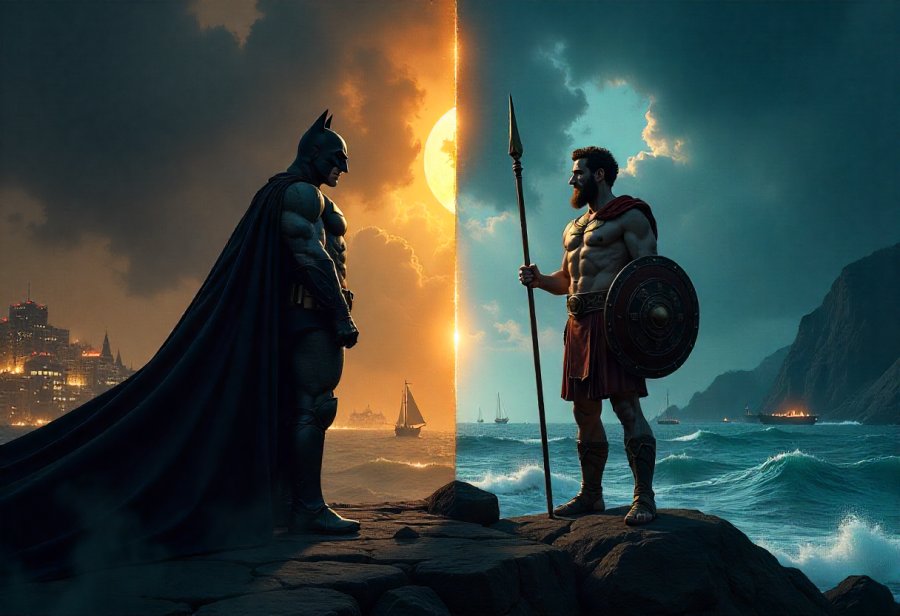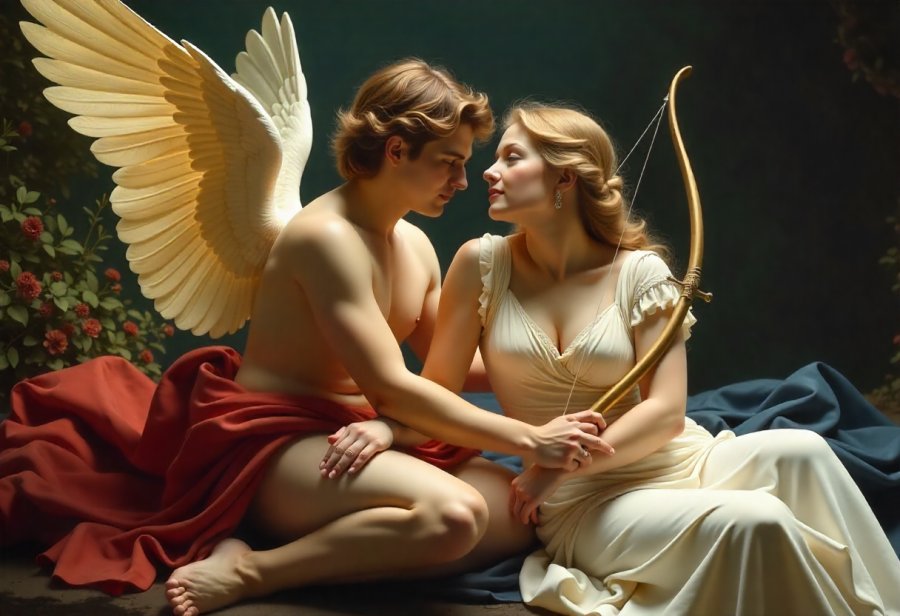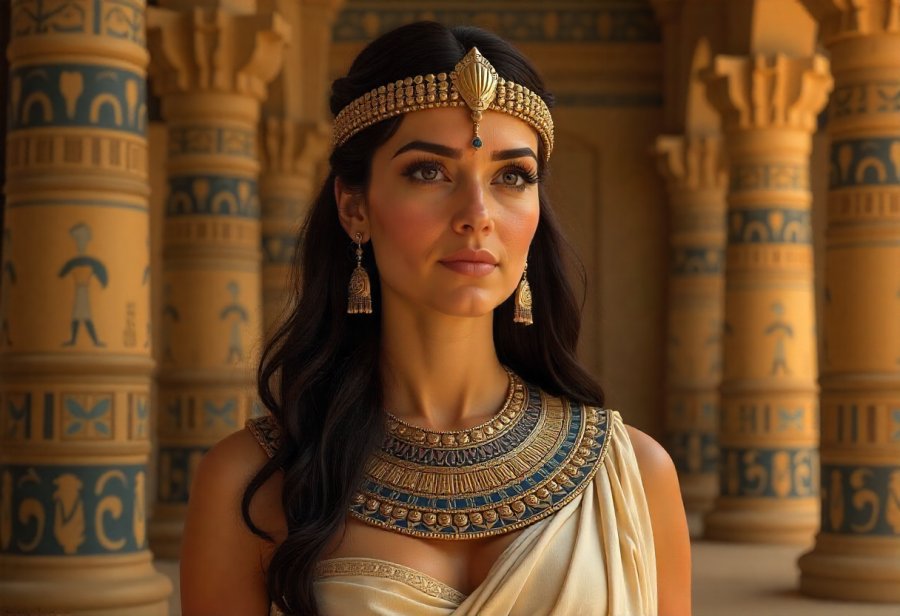Hero archetypes like Odysseus and Batman reveal how societies shape their ideals through stories rooted in their unique fears and hopes. Odysseus symbolizes ancient Greek values of cunning, endurance, and loyalty amidst divine wrath and mortal peril, reflecting a culture that venerates virtue and resilience. Conversely, Batman embodies modern urban anxieties—crime, moral ambiguity, and internal darkness—highlighting a society grappling with chaos and moral decay. These characters demonstrate that heroism is not static but evolves with societal shifts, emphasizing traits like resilience, intelligence, and morality tailored to their worlds. As we explore their stories, questions arise: Are hero archetypes universal, or are they cultural mirrors reflecting collective anxieties? Their enduring appeal lies in their capacity to inspire resilience and moral strength, serving as symbols of hope and caution across ages. Ultimately, these archetypes reveal much about what societies cherish—and fear—in their pursuit of meaning and justice.

Unveiling Hero Archetypes: Mirrors of Society’s Values and Fears
Hero archetypes are like templates that show up repeatedly across stories, myths, and cultural narratives around the world. They aren’t just characters for entertainment; they serve as mirrors reflecting what societies value, fear, and aspire to. When we look at these archetypes, we see more than just heroic figures—we see the ideals and anxieties that shape a culture’s identity. For example, a hero known for bravery and sacrifice often embodies a society’s admiration for courage and selflessness, while a trickster figure might reveal underlying fears of deception or chaos.
These archetypes help communities interpret their world and define moral standards. They highlight which qualities are celebrated and which dangers are to be avoided. A hero’s journey, whether in ancient legends or modern stories, exposes what a society considers admirable or threatening. Importantly, these archetypes aren’t static; they evolve over time, adapting to changing norms, values, and shared experiences. This ongoing transformation makes hero figures living reflections of the cultural landscape—they both shape and are shaped by societal shifts.
Studying hero archetypes also reveals how stories function within a society. They provide models of virtue and morality, inspiring individuals to embody qualities like resilience, intelligence, or morality. At the same time, heroes often embody societal fears—such as chaos, divine punishment, or moral decay—serving as cautionary symbols. Through storytelling, these archetypes reinforce what a society strives for and what it seeks to overcome, acting as moral compass points that guide collective behavior.
Across different eras, hero archetypes have transformed in tandem with social change. Ancient heroes like Odysseus are celebrated for cunning and endurance—traits that mirrored a world where wit and resilience were crucial for survival. In contrast, modern heroes like Batman reflect contemporary concerns about urban crime, mental health, and moral ambiguity. Their stories adapt to the issues and values of their times, illustrating how hero archetypes are dynamic, not fixed.
At their core, hero archetypes symbolize human ambition and struggle. They embody our universal desire to overcome adversity, seek justice, and find meaning amid chaos. Whether it’s Odysseus battling divine wrath or Batman confronting citywide corruption, their stories remind us that heroism is rooted in qualities we all strive to develop—courage, cleverness, resilience, and morality. Exploring these archetypes offers insights into how societies see themselves and what they hope to become.
Ancient Greece to Modern Cities: How Context Shapes Hero Stories
The stories of Odysseus and Batman are deeply shaped by the worlds they inhabit, reflecting the fears and values of their respective eras. Odysseus’s adventures come from ancient Greece, a society that prized honor, cunning, and resilience. His journey is filled with divine beings, monsters, and war, mirroring Greek concerns about divine retribution and chaos. Greek culture celebrated traits like bravery and intelligence, viewing heroes like Odysseus as exemplars of virtue who could navigate divine and mortal threats through wit and endurance.
In contrast, Batman’s origins are rooted in a modern urban landscape, forged by the upheavals of the 20th century. Created during the Great Depression, Gotham City embodies fears of crime, corruption, and social disorder. Its dark alleys and criminal underworld symbolize contemporary anxieties about moral decay and societal fragility. Batman’s persona—brooding, complex, and vigilante—embodies society’s hope that even amid chaos, a determined individual can restore order and justice.
The environments that birthed these heroes also influenced what qualities were celebrated. Odysseus’s Greece valued cunning, loyalty, and perseverance—traits vital for survival amidst divine interference and mortal enemies. His resilience and strategic thinking reflect a culture that admired intelligence and endurance as means to overcome adversity. Meanwhile, Gotham’s urban chaos fostered a hero who operates in moral gray areas, confronting societal fears of crime and internal chaos. Batman’s heroism involves navigating complex moral dilemmas, embodying the anxieties of a society grappling with internal and external threats.
These contrasting settings do more than shape their stories—they mirror the broader societal concerns of their times. Odysseus’s mythic Greece focused on divine favor and heroic virtue, emphasizing resilience and cleverness as keys to overcoming divine wrath. Gotham, haunted by fears of moral decline, calls for a hero who fights in the shadows, confronting societal decay head-on. Both heroes serve as reflections of their cultures’ hopes and fears, illustrating how environment influences hero narratives and their enduring symbolic power.
Understanding these contexts reveals how hero stories are more than mere entertainment; they are reflections of societal landscapes. Odysseus’s cleverness and resilience echo ancient Greek values of virtue and divine harmony. Batman’s dark vigilante persona captures modern fears of chaos and moral breakdown. Their stories evolve with societal changes, making them timeless symbols that continue to resonate across generations.
As societies progress, hero archetypes adapt to new realities. Today’s heroes might embody themes like environmental stewardship, diversity, and internal moral complexity, mirroring contemporary concerns. Recognizing how environment shapes hero narratives helps us appreciate their role as cultural barometers—reflecting collective fears and aspirations. These stories, rooted in their unique contexts, remain vital tools for societal reflection, guiding us through ongoing change and challenge.

Core Traits of Odysseus and Batman: Resilience, Strategy, and Morality
Odysseus and Batman, though separated by centuries and cultures, share core traits that define their heroism: resilience, intelligence, and morality. These qualities form the backbone of their stories, allowing each hero to navigate worlds filled with danger, deception, and moral complexity.
Resilience is perhaps their most striking similarity. Odysseus endures a seemingly endless series of hardships—divine punishment, monstrous creatures, and treacherous seas—yet his perseverance never falters. Every setback fuels his determination to return home, embodying the Greek ideal of enduring through adversity. Batman’s resilience manifests in his relentless fight against Gotham’s criminal underworld. Despite physical injuries, emotional trauma, and personal loss, he pushes forward, driven by a sense of duty. His mental toughness enables him to recover from defeat and adapt to new threats.
Strategic thinking is another key trait. Odysseus’s cleverness is legendary; he devises intricate plans and outwits gods, monsters, and enemies alike. His resourcefulness often turns dire situations in his favor. Batman’s detective skills and tactical mind are equally sharp. He studies his foes carefully, anticipates their moves, and employs advanced technology and psychological insights to stay ahead. Both heroes show that sharp thinking isn’t just helpful—it’s essential for survival in their worlds.
Morality adds nuance to their heroics. Odysseus’s moral compass is guided by Greek ideals of honor and loyalty. His actions, even when morally ambiguous, aim to protect his crew and restore his reputation. His cunning is intertwined with a sense of virtue, even when bending rules. Batman’s morality is more layered; operating outside the law, he walks a fine line between justice and vigilante action. His choices often spark debate, but his overarching goal remains to safeguard Gotham and uphold his own code of ethics.
The interaction of resilience, intelligence, and morality creates a dynamic synergy. Odysseus’s endurance is supported by his cunning, enabling him to survive divine tests and mortal enemies. Similarly, Batman’s mental toughness fuels his strategic planning, helping him recover from setbacks and social chaos. Their morality guides their decisions, shaping how they channel their resilience and intelligence in pursuit of their goals. These traits reinforce each other, forming the core of what makes them true heroes.
In both figures, heroism isn’t rooted in a single trait but in a combination that adapts to their environments. Odysseus’s resilience and wit helped him endure divine wrath and mortal threats, reflecting a culture that valued cunning and endurance. Batman’s perseverance and strategic mind respond to modern fears of chaos, crime, and internal darkness. Their stories demonstrate that resilience, intelligence, and morality are vital tools in overcoming adversity and shaping a better world.
These qualities continue to inspire modern audiences, illustrating the importance of adaptability and moral integrity in the face of ongoing challenges. For those interested in learning more about these iconic heroes and their enduring legacies, exploring the concept of heroism through detailed analyses can provide deeper insights. You can read about their stories and the lessons they impart at Heroism Stories and Lessons.
Distinct yet Connected: Thematic Insights into Odysseus and Batman’s Heroism
Both Odysseus and Batman exemplify resilience and strategic thinking, but they channel these traits in ways that reflect their distinct cultural contexts. Odysseus’s resilience is rooted in enduring divine wrath, monstrous threats, and endless setbacks, with his perseverance serving as a testament to Greek ideals of endurance and wit. His ability to adapt and craft clever plans under pressure allows him to navigate divine chaos and mortal dangers alike. Conversely, Batman’s resilience manifests through his relentless fight against Gotham’s criminal underworld, often confronting physical injuries, emotional trauma, and personal loss. His mental toughness and unwavering determination enable him to recover from setbacks and persist in the face of internal and external chaos.
Their strategic minds further distinguish them, yet they approach problem-solving differently. Odysseus’s legendary cleverness relies on elaborate plans and quick thinking to outwit gods, monsters, and enemies. His resourcefulness often turns dire situations into opportunities for victory, embodying a culture that prizes cunning and perseverance. Batman’s detective skills and tactical genius are equally sharp; he meticulously studies foes, anticipates their moves, and employs advanced technology and psychological insights. Both heroes demonstrate that sharp strategic thinking is essential for overcoming complex challenges, whether navigating divine interference or urban crime.
Morality adds a nuanced layer to their hero stories. Odysseus’s actions, guided by Greek values of honor and loyalty, sometimes involve morally ambiguous choices, yet they serve a higher purpose—protecting his crew and restoring his reputation. His cunning is intertwined with a sense of virtue that balances morality and pragmatism. Batman’s morality is more layered, operating in a gray zone outside the law. His vigilante justice invites debate, but his overarching aim is to safeguard Gotham and uphold his personal code of ethics. Both figures show that moral complexity is an inherent part of heroism, reflecting the societal values and dilemmas of their worlds.
The synergy between resilience and strategy is central to their heroism. Odysseus’s endurance enables him to withstand divine tests and mortal enemies, while his cleverness helps him turn adversity into advantage. Batman’s mental toughness and tactical ingenuity empower him to outsmart criminals and recover from personal setbacks. Their stories reveal that resilience and strategic thinking reinforce each other, creating a powerful combination that sustains heroism against all odds. This dynamic interplay underscores the idea that internal resolve paired with sharp intellect is vital for overcoming chaos and threat.
Ultimately, both heroes embody human ambition and the universal quest to confront adversity. Odysseus’s relentless drive to return home and restore his honor reflects the ancient Greek ideal of personal achievement, while Batman’s unwavering pursuit of justice echoes modern aspirations for order amid disorder. Their stories serve as timeless reminders that resilience, intelligence, and moral strength are essential tools in shaping a better world. By examining these core traits, we see how hero archetypes adapt to their societies’ hopes and fears, inspiring us to face our own challenges with courage and cleverness.

Shaping Legends: Society’s Fears, Hopes, and Values in Hero Archetypes
Society’s fears, hopes, and values shape hero archetypes as much as they reflect collective dreams and anxieties. From Odysseus’s cleverness and resilience rooted in ancient Greek ideals to Batman’s dark vigilante persona molded by modern urban concerns, these characters embody the cultural priorities of their times. Their traits reveal what societies admire and what they are wary of—courage and endurance in one era, cunning and moral ambiguity in another.
These stories do more than entertain; they serve as mirrors of societal anxieties and aspirations. Odysseus’s journey highlights themes of divine favor, loyalty, and perseverance, echoing a civilization preoccupied with divine approval and heroic virtue. Conversely, Batman’s battles against chaos and corruption mirror contemporary fears of moral decay, social disorder, and internal darkness. His persona—brooding and complex—embodies society’s hope that even in a fractured world, a dedicated individual can restore order and justice.
Hero narratives also influence societal norms, reinforcing desirable virtues and warning against dangers. Ancient heroes emphasized strength, loyalty, and wit—traits that upheld hierarchical social values. Today’s heroes, often more diverse and morally nuanced, reflect evolving priorities like inclusivity, resilience, and psychological insight. Their stories adapt to these shifting concerns, ensuring hero archetypes remain relevant and inspiring in changing social landscapes.
As challenges grow more complex—climate issues, technological upheavals, social inequalities—hero archetypes will continue to evolve. Future heroes might embody environmental consciousness or moral sophistication, mirroring society’s ongoing hopes and fears. These stories will serve as cultural barometers, offering both comfort and a call to action, guiding communities through uncertainty while inspiring resilience and ingenuity.
Understanding how societal fears and aspirations shape hero archetypes reveals their deeper purpose: to help us navigate collective struggles and envision better futures. Heroes embody the virtues we aspire to and the dangers we seek to avoid, acting as symbols of moral strength and resilience. Their stories remind us that our shared fears can be confronted with courage, that our hopes can inspire action, and that heroism itself is rooted in the human desire to overcome adversity.
In the end, hero archetypes are living reflections of the societies that create them. They evolve alongside our collective consciousness, adapting to new realities and challenges. By studying these stories, we gain insight into our own fears and ambitions, recognizing that the heroes of yesterday and today serve as guides—reminding us of what we value, what we fear, and what we might become in the face of an uncertain future.







